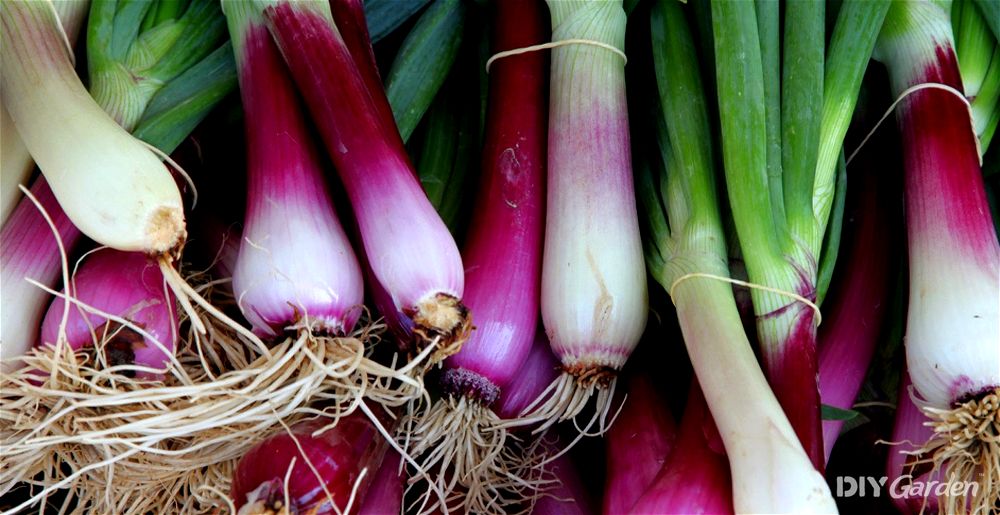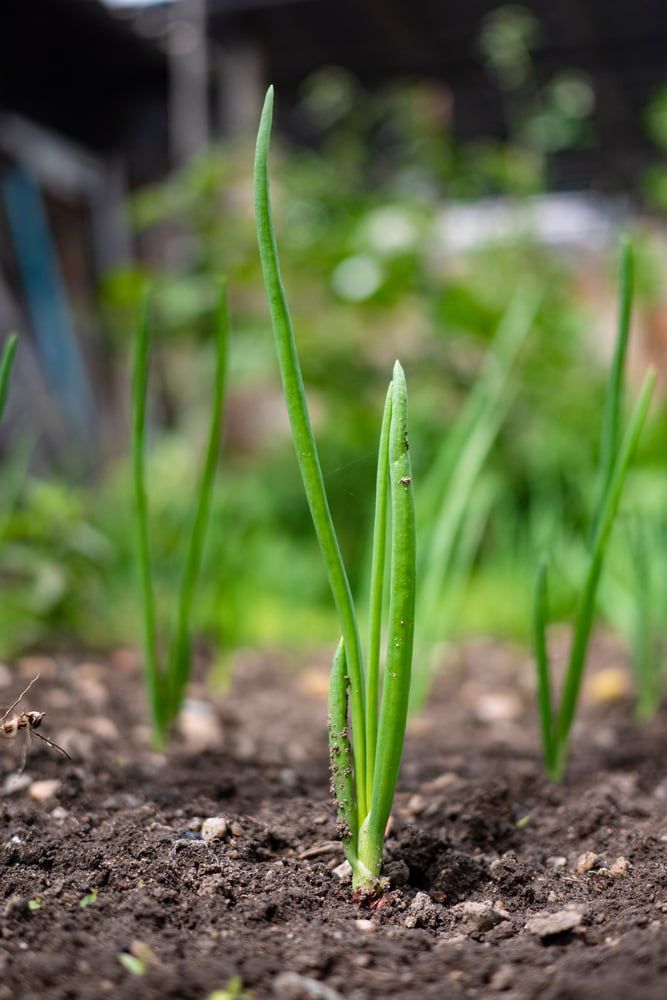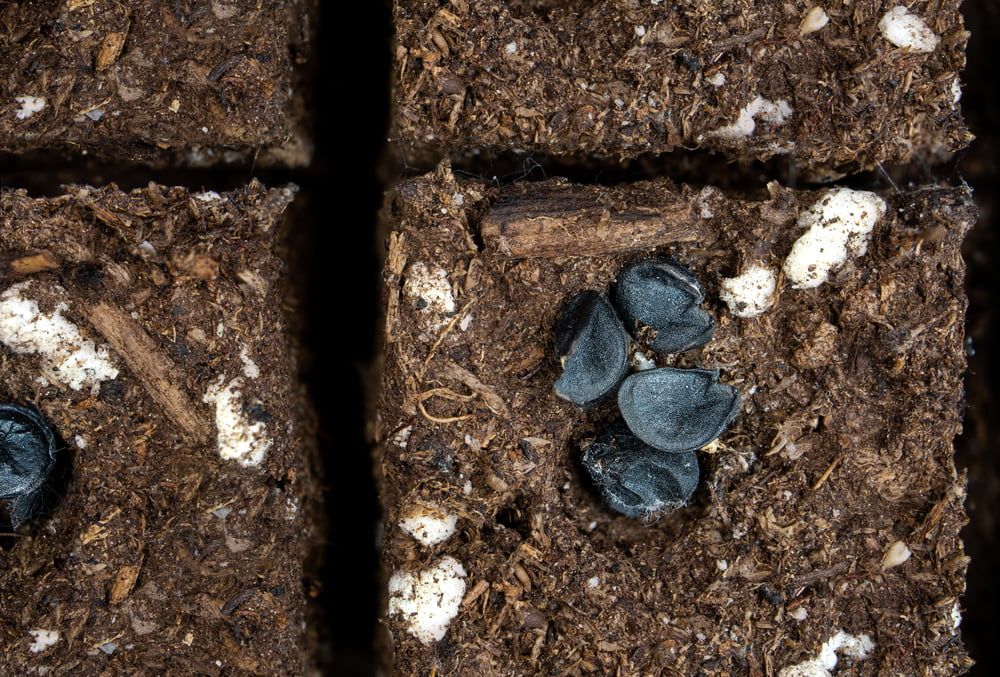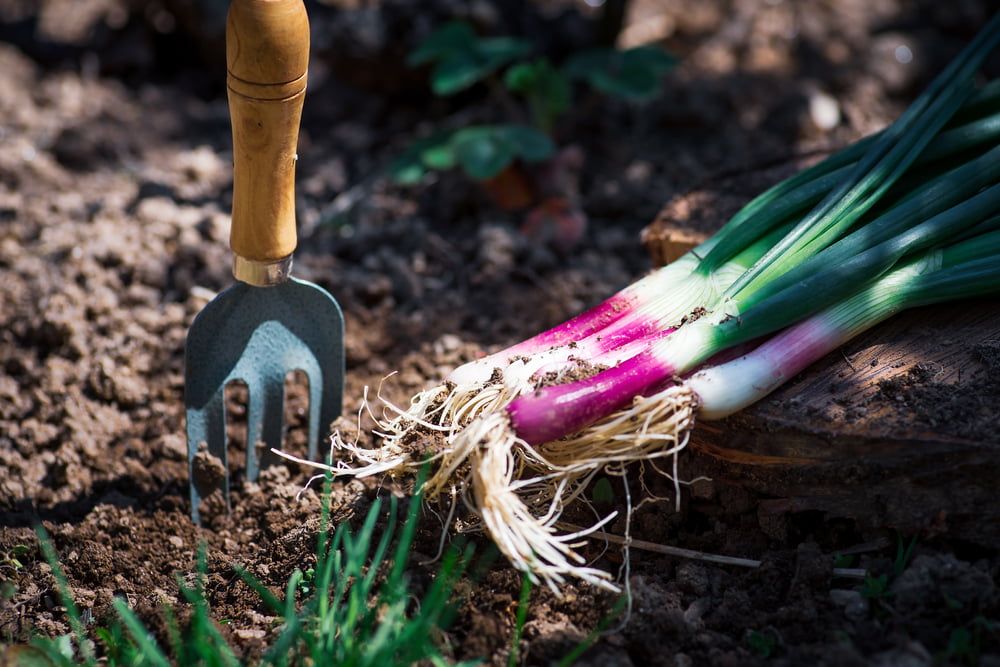
Not only are spring onions so easy to look after, but they usually mature in just eight weeks, making this fast-growing vegetable a satisfying one to have in the garden. Sow your seeds successionally from late winter to the end of summer and you’ll be able to enjoy freshly-picked spring onions for the better part of the year.
Growing Spring Onions: A Quick Snapshot
When to Sow – Feb-Aug
When to Plant – Apr-Sep
When to Harvest – Mar-Oct
Average Yield per Plant – 20g
Spacing – 5-15cm
Depth – 1.5cm
How to Grow Spring Onions at Home
Whether you have a spacious garden, a small allotment, or a sunny windowsill, spring onions are a crop that just about everyone can grow. Once planted, they don’t require much attention, but will have a much crisper flavour and texture than anything you could buy in a shop.
Ideal Growing Conditions for Spring Onions
Spring onions aren’t fussy. They’ll grow in just about any soil type, so long as it’s well-draining. Of course, the better your soil quality, the better your harvest, but you’ll still enjoy good yields without needing to amend your soil much.
Full sun is best for spring onions, but they’ll grow in partial shade too.
They don’t need much in terms of space either, and will happily grow through the year when soil temperatures are above 10°C.
How to Grow Spring Onions from Seed
Spring onions owe their name to the fact that they’re traditionally sown in the spring, but then harvested in early summer. However, springtime harvests are still possible if you start your seeds under cover in late winter.
Sowing Spring Onion Seeds Under Cover
Disturbing spring onion roots causes the plants to bolt faster than it otherwise would have. This makes it best to start spring onion seeds in modules rather than open trays, as it means less root disturbance when planting out.
Traditionally, spring onion seeds are sown in rows. However, when you’re growing them for home use, it can often make more sense to grow them in bunches. So long as your bunches don’t contain too many spring onions, they’ll still grow to a good size.
Here’s how to multi-sow your spring onion seeds:
- Fill your modules with a quality compost
- Water the modules
- Make 3-5 indentations, about 1.5cm deep, in each module
- Place a seed into each indentation and then cover over with soil
- Lightly water your modules again
Spring onion seeds germinate best at temperatures of around 15°C. A sunny windowsill in your home is the perfect spot to place your seeds
It will take one to two weeks for your spring onion seeds to germinate. Once they do, make sure that they’re getting plenty of light and enough water to keep their soil consistently moist, but not soggy.
How to Direct Sow Spring Onions
Once the soil outside warms up a bit in the spring, you can start to direct sow your spring onions.
If you would like to grow them in rows, make drills in your soil about 1.5cm deep. Keep each row about 10-15cm apart. Sow your seeds, cover over, and water.
Once germinated, thin your seedlings so that each spring onion plant is about 5cm apart.
Again, you can also sow your spring onions in bunches outside. Keep each bunch of seeds about 10-15cm apart, and then thin your seedlings so that there are no more than 7 or 8 plants in a bunch.
Don’t forget that you can eat all of your spring onion thinnings – they’re very similar to chives!
How to Plant Spring Onions Outside
Planting out your multi-sown spring onion modules is easy. Wait until your seedlings are a month old, so that they can handle any springtime frosts.
Remove the whole block of soil from each module and plant this into the ground. Space each bunch about 10-15cm apart.
Once planted, make sure that you water your spring onions well.
How to Plant Spring Onions in a Greenhouse
Spring onions will grow very well in a greenhouse. While some gardeners plant them in rows (as described above), others make use of the fact that spring onions don’t need much space and interplant them among slower-growing greenhouse plants.
Use the same planting methods as when planting outside.
If your greenhouse beds are full, spring onions grow well in pots too. You can get away with using quite small containers for spring onions, since they don’t need much space – a depth of 12cm is usually enough.
How to Care for Spring Onions
Spring onions are a low-maintenance vegetable that don’t require much in terms of care.
Watering Spring Onions
Spring onions need about 2.5cm of water a week. They do best when their soil is consistently moist, and rainfall usually takes care of this.
Since spring onions have very shallow roots, they can dry out quite quickly. If rainfall has been low, then regularly check soil moisture and manually water your plants if needed. Be careful not to over-water – this will cause the plants to rot.
Feeding Spring Onions
Spring onions don’t need much in terms of feed. However, applying a slow-releasing fertiliser to their growing area, just a couple of times during the growing season, will help to improve yields.
Weeding Spring Onions
Although spring onions grow quickly, some weeds grow even faster. If you’re not careful, young spring onions can easily end up smothered by weeds.
Make sure that you remove any weeds before they cause problems. Mulching around your spring onion plants can help to reduce the amount of time you spend weeding.
How to Harvest Spring Onions
Once your spring onion stems are about 1cm thick, they are ready to be harvested. You may be tempted to leave them in longer so that they can grow a little bigger, but don’t allow them to get too large. Once the leaves have reached about 45cm in length, they’ll begin to lose their flavour.
When it comes to harvesting spring onions, you have two options:
- Use a pair of scissors to snip away the green leaves of the plant. The roots and bulb will then produce new green shoots, giving you a few harvests in total.
- Use a fork to loosen the soil around your spring onions, and then gently lift the whole plants out of the ground.
How to Store Spring Onions
When kept in a sealed bag, spring onions will store in the fridge for about two weeks. Chop off the roots before you do this, and cut your spring onions in half if necessary so that you can easily fit them into a bag.
Another short-term storage option is to place your spring onion harvest into a jar. Fill the jar with enough water to cover the roots, and then place it on a windowsill. Replace the water every few days. Not only will this keep your spring onions fresh for at least a month, but they’ll continue to grow too!
For long-term storage, chop your spring onions up, place them into a sealed bag, and store them in the freezer. Spring onions freeze surprisingly well, retaining their full flavour and texture for at least three months, but lasting for up to a year.
How to Prepare & Cook Spring Onions
Other than the roots, every other part of a spring onion can be eaten. The green parts are crisper and more subtle in flavour, while the white parts are more intense.
To prepare a spring onion, chop the roots off and remove any tough outer leaves.
Then, cut the rest of it up in a way that suits the recipe you’re following. Chopping spring onions up into 1-2cm pieces is the most popular way to prepare them, but you can also try a Julienne cut, or chopping them into larger chunks.
Some of the best ways to showcase spring onions in food are:
- A raw garnish for just about everything
- Chinese scallion pancakes
- Added to a quiche
- Left whole and braised in butter
- Turning them into fritters
Common Spring Onion Problems
Due to their strong smell, spring onions tend to be avoided by most pests. You may find birds trying to pull young shoots out early in the season, but this can be remedied by covering your plants.
Diseases don’t usually affect spring onions either. Rot can be caused by waterlogged soil, but so long as your plants have good drainage, they should be just fine.
Popular Spring Onion Varieties to Grow
Salad onions, scallions, green onions – the spring onion as a vegetable has a few different names. That may already seem confusing to some, but just wait until you start exploring the many different varieties of spring onion available – there really is so much to choose from.
If you’re feeling a little overwhelmed by your many options, here are some of the most popular spring onion varieties to get started with:
- White Lisbon – productive, easily available, and cheaper than most other varieties
- North Holland Blood Red – instead of being white, the lower part of the stem is a vivid red
- Red Welsh – known for being incredibly cold-hardy
- Ishikura – a Japanese variety with about 45cm of white stem topped with 30cm of green
- Purplette – boasting vibrant purple stems, this spring onion can also be left in the ground to form a bulb
Conclusion
When it comes to space and attention, spring onions don’t ask for much, making them a popular vegetable to grow at home. Sow your seeds at the right time while experimenting with different storage options and you’ll never need to buy spring onions from a shop again!





